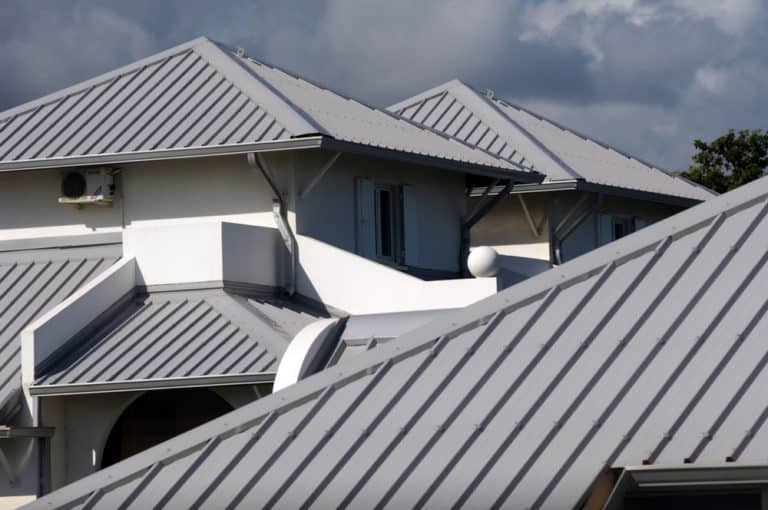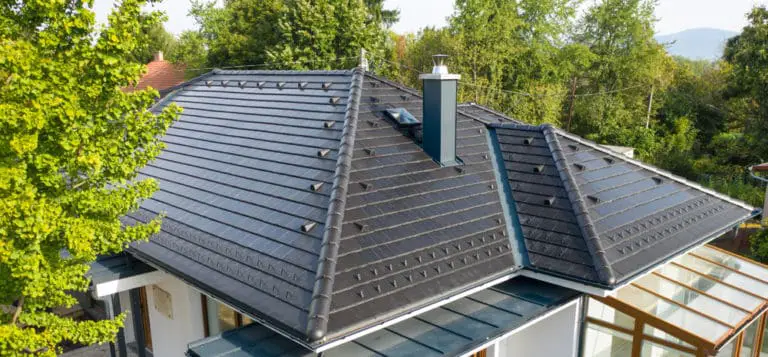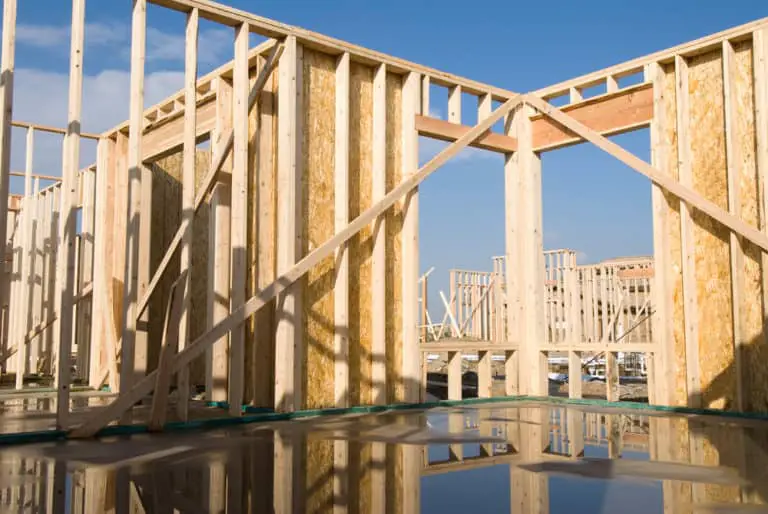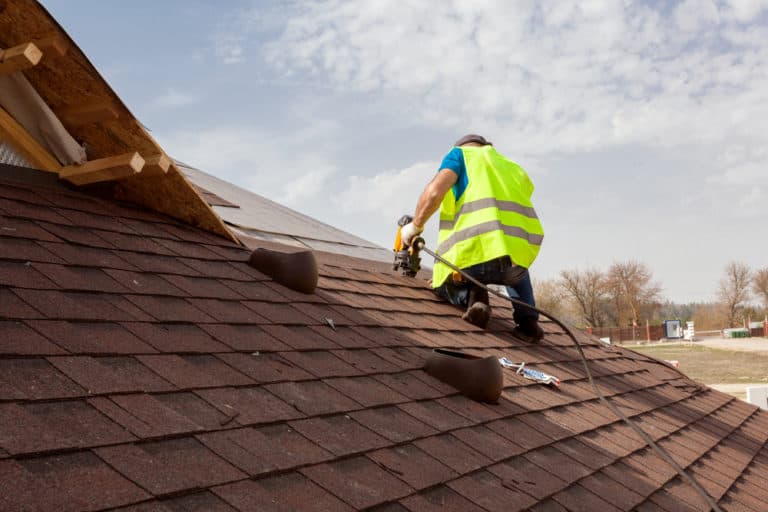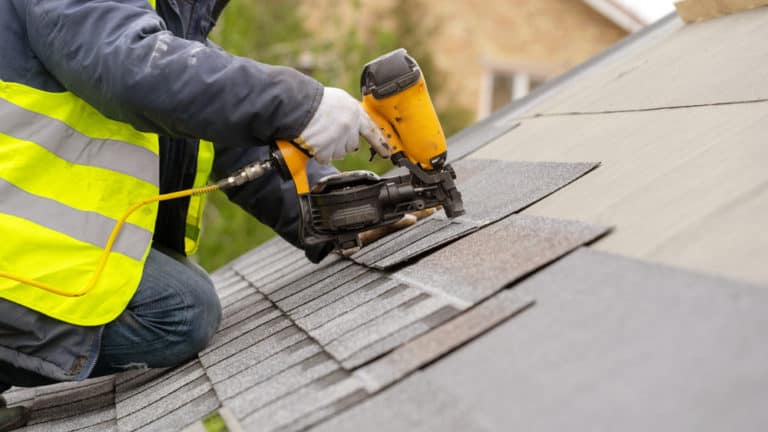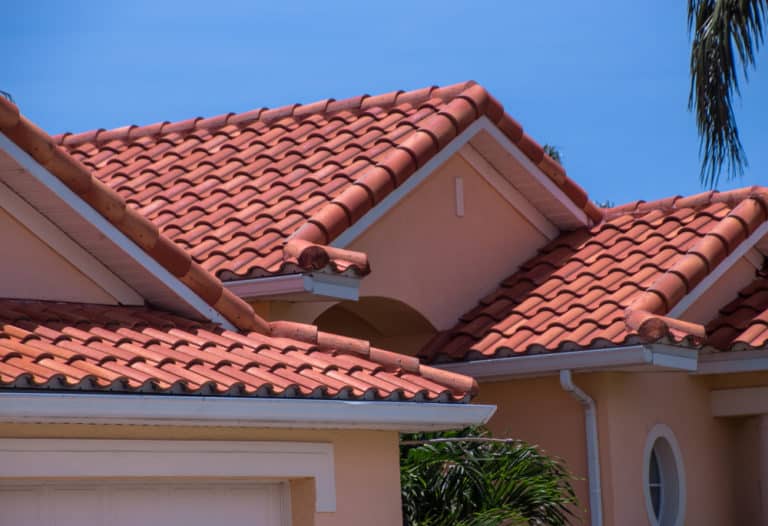Is A Pitched Roof Warmer Than A Flat Roof?
The proper roofing of a house or building is essential in prolonging its lifespan and ensuring that the residents are safe and comfortable. Whether you have your heart set on getting a pitched roof or a flat roof, it’s worth considering both and making an informed decision. Is a pitched roof warmer than a flat roof?
A pitched roof is warmer than a flat roof because it is built higher and has an attic that can take more insulation, and its triangular shape helps combat harsh weather. A flat roof is built low and has less space for insulation. It struggles to keep away water, snow, and debris.
While choosing between a pitched roof and a flat roof may seem straightforward at first, making the right choice is crucial because it will save you a lot of time and money. Understanding the roof structure and how the insulation has been implemented will make your choice more meaningful.
Is A Pitched Roof Warmer Than A Flat Roof?
There are some crucial differences when considering a flat or pitched roof structure for a home or building. A pitched roof has greater structure and stability than a flat roof and better drainage in locations with a lot of rain. Furthermore, it has more insulation, particularly in the attic, making it warmer.
On the other hand, a flat roof is a cost-effective and practical solution for individuals who live in dry climates. However, there is no attic and hence less insulating area on a flat roof because it is not inclined. As a result, insulation exists between the gap leading to the outside and inside of the top.
Therefore, if a house has a pitched roof, then insulation will be added to the attic, but there is much less insulation with a flat roof. As a result, a flat-roofed home or building is more sensitive to colder conditions than a pitched roofed residence.
Pitch roofed structures are typically 10 – 15% more compact than flat-roofed structures. This significant decrease translates into improved thermal insulation by simply restricting the extent of the surface exposed to the outside.
Furthermore, they can easily endure snow, ice, water, and wind while providing more excellent insulation in these harsh climates. They are solid, stronger, and provide optimum water drainage since they look like a triangle. As a result, they are a better choice for keeping heat than flat roofs and are warmer.
Because flat roofs do not drain as efficiently as sloping roofs, water tends to pool on flat roofs, causing the roofing material to deteriorate. Because weakened materials amplify weather conditions, further efforts must be taken to ensure that seals are established around pipes and flashing.
What Maintenance Does A Pitched/Flat Roof Require?
Roofs, both flat and sloped, need to be maintained regularly. Even though pitched roofs are more challenging to clean and examine, flat roofs require more upkeep over time owing to their slanted construction.
Flat roof drainage isn’t as adequate as that on a pitched roof, and if drains aren’t checked regularly, they can get blocked, causing damage and leaks. A waterproof seal is required on the roof and regularly maintained to avoid leaks and costly repairs.
Many flat roof leaks result from a lack of regular inspection and maintenance, so if you pick a flat roof for your home, be sure you have the time to examine it periodically.
What Are The Advantages Of A Pitched Roof?
A pitched roof may require more space to build, but there are countless advantages to having a pitched roof.
- Due to its triangular shape, rainwater quickly flows off the roof, reducing the risk of water damage and significantly prolonging the roof’s lifespan; of course, it also means paying less for roof repairs.
- The spacing in the roof provides a healthy amount of ventilation that helps keep the temperature comfortable for the Summer and Winter seasons. Its design allows humidity to flow out, while the insulation traps the heat and warms the house.
- The roof’s pitch ensures that snow is equally distributed, protecting a roof from potentially heavy piles of snow.
There are some drawbacks when it comes to owning a pitched roof.
- Because they take a lot of room to construct, they don’t work well for structures with numerous floors or intricate layouts.
- You can’t do much with a pitched roof; you’re very much stuck with one style.
- Pitched roofs are significantly more costly to build and maintain than flat roofs.
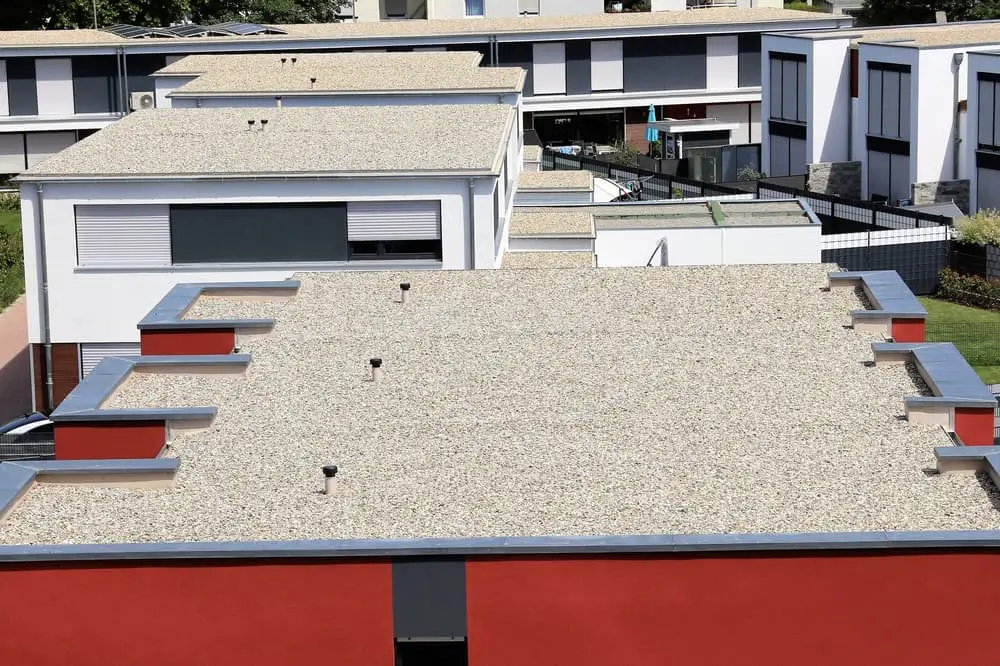
What Are The Advantages Of A Flat Roof?
A flat roof is preferable for warmer climates, and it is a more affordable option than a pitched roof.
- Due to the materials used and the amount needed to construct a flat roof, it is much easier to build it.
- Flat roofs are pretty durable and won’t easily cave into weather or weight. Furthermore, they can also be water-resistant, depending on the material used to build them, making water damage a thing of the past.
- Fixing and conducting maintenance on a flat roof is much easier and less expensive than a pitched roof. Easy access enables you to regularly clean a flat roof, removing algae, mold, and other stains that may weaken the roof material.
Despite its great qualities, there are some downsides to flat roofs.
- One of the biggest cons to a flat roof is its inability to shake off the water when it rains. Due to its flat surface, water may puddle up for extended periods and weaken the materials, causing mold and leakage. Ensure that you use waterproof seals regularly to prevent rainwater and snow from clogging the drains.
- Leaves, sticks, and other debris can also disrupt a flat roof’s drain, which in turn prevents water and snow from draining properly.
Conclusion
While pitched roofs and flat roofs both have their advantages and disadvantages, pitched roofs are warmer because they have more space for insulation, and they are better at fending off harsh weather climates.
Sources
- https://www.youtube.com/watch?v=i41oW85zPm8&ab_channel=SkillBuilder
- https://homeguides.sfgate.com/average-life-roofing-94238.html
- https://www.rockwool.com/group/products-and-applications/roof-insulation/pitched-roof-insulation/
- https://www.youtube.com/watch?v=WZ6Ng6YI9OA&ab_channel=SteveRoofer
- https://www.youtube.com/watch?v=kXEAGvPTJuM&ab_channel=KnaufInsulation
- https://www.youtube.com/results?search_query=advantages+of+a+pitched+roof
- https://www.youtube.com/watch?v=ec9HiW2JjAU&ab_channel=SEORankings


